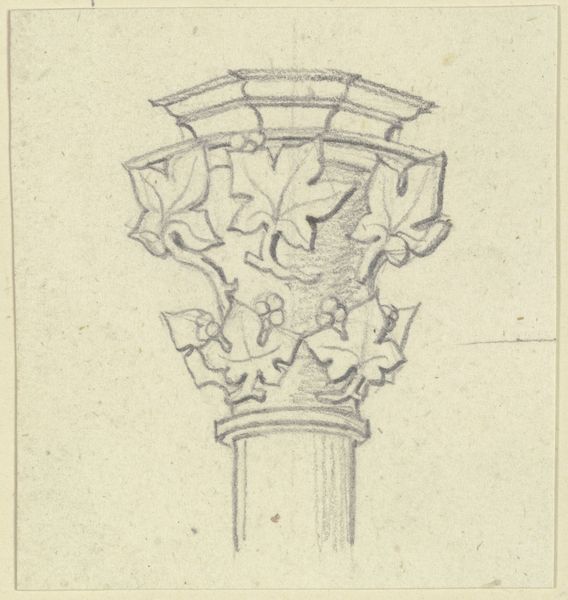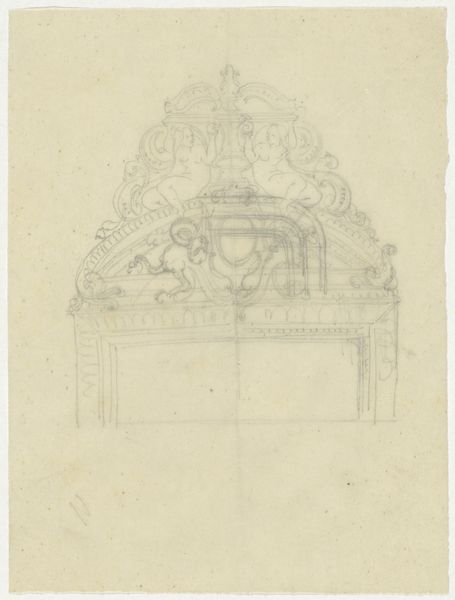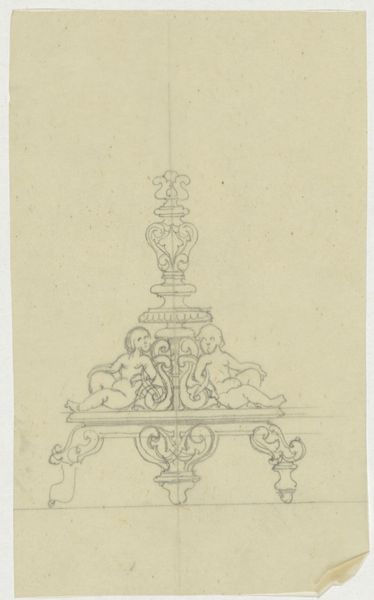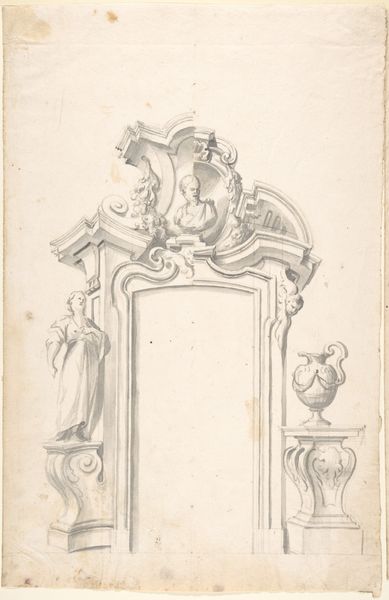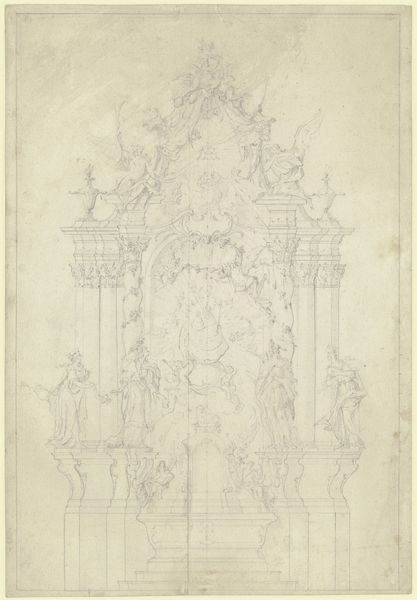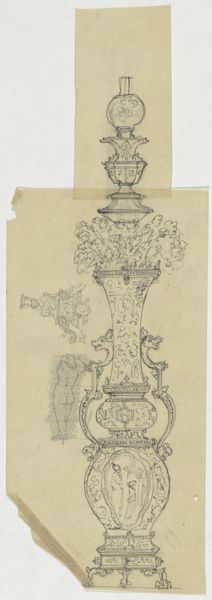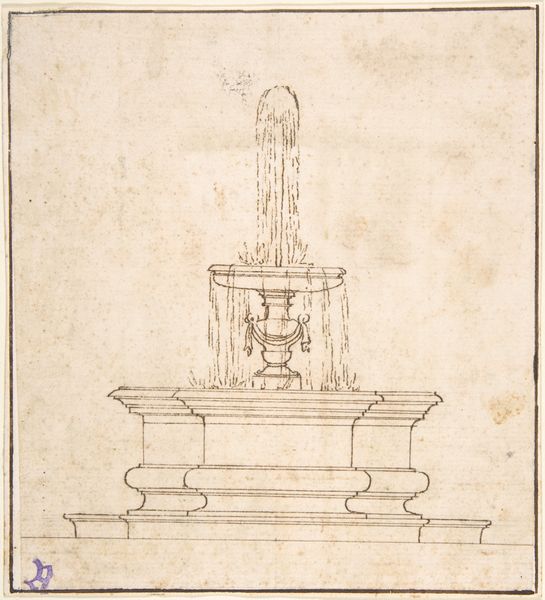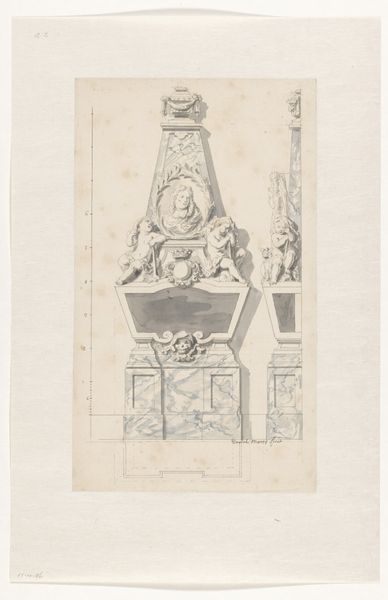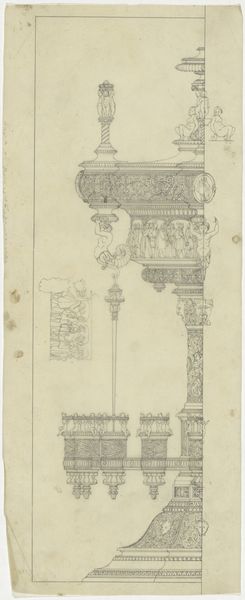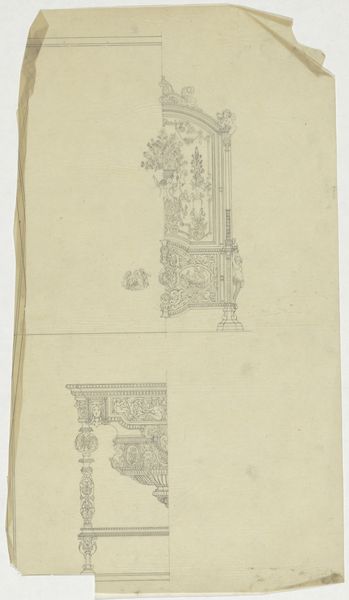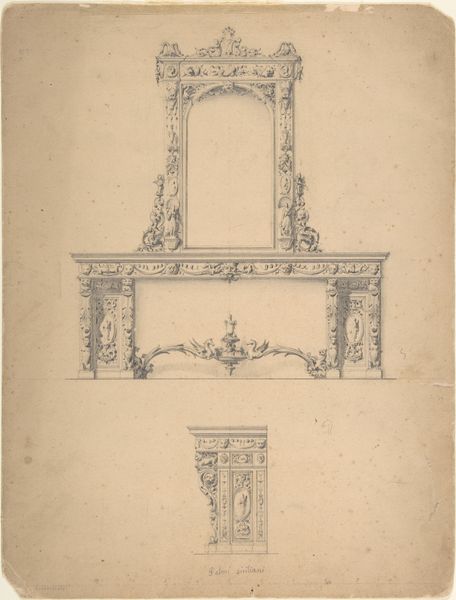
Dimensions: height 184 mm, width 109 mm
Copyright: Rijks Museum: Open Domain
Curator: Look at this detailed pencil drawing. It's titled "Portret van Pedro Enríquez de Acevedo, graaf van Fuentes," dating back to around 1690. It's currently held at the Rijksmuseum. Editor: My first thought? It's strikingly precise, almost architectural. There's a feeling of aspiration, reaching for something higher. What's your take? Curator: Indeed, it’s a neoclassical study, evident in the geometric forms and classical realism of the figures. It’s fascinating to see how the artist uses line to define both structure and form. I suspect that this wasn’t intended to be an artwork by itself. It seems to be a sketch made for another context. Editor: The radiant burst behind the structure gives a powerful effect. The two winged figures seem to uphold or unveil something, giving them a central place in its symbology. Do you agree with the idea of them bearing some meaning within the composition? Curator: Certainly! The inclusion of those figures alludes to ideals prominent at the time, reflecting political ambitions of that moment, and likely connected to the Count himself. These kinds of portrait commemorations usually show strongmen carrying power structures in a not very nuanced exercise of propaganda. Editor: I see the neoclassical element but wonder if we're missing potential baroque symbolism, what do you think? The garland details along the base seem evocative, even decorative amidst that stark line work. The laurel leaf wreath can represent triumph or peace. Do you consider it more related to propaganda, as you say, or simply a portrayal of values? Curator: Good point. There's undoubtedly a symbolic dance occurring here. It's tough to entirely divorce it from the context of power though. Those iconographic choices rarely happen in isolation. The display itself becomes a means of cultural and social signaling, even a way to convey an aristocratic identity and historical significance to future audiences. Editor: Absolutely, I agree that understanding its social context is paramount. Seeing it through that lens helps it resonate even now. Curator: Precisely. It’s not merely an aesthetic object but a document. It holds multiple meanings, revealing threads connecting art, power, and cultural identity, even if that means showing what are our societies.
Comments
No comments
Be the first to comment and join the conversation on the ultimate creative platform.
